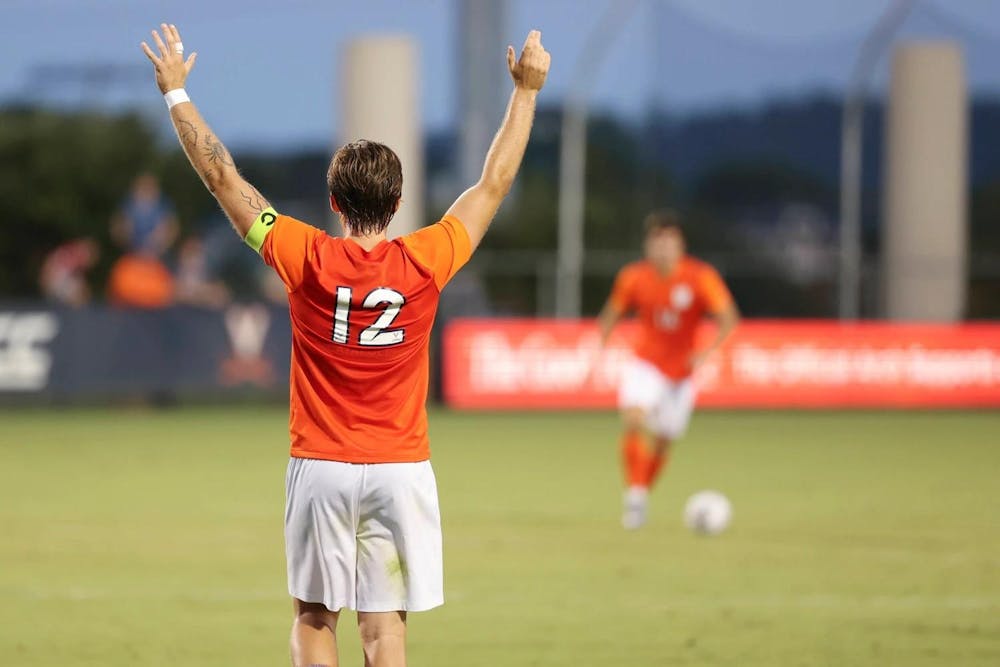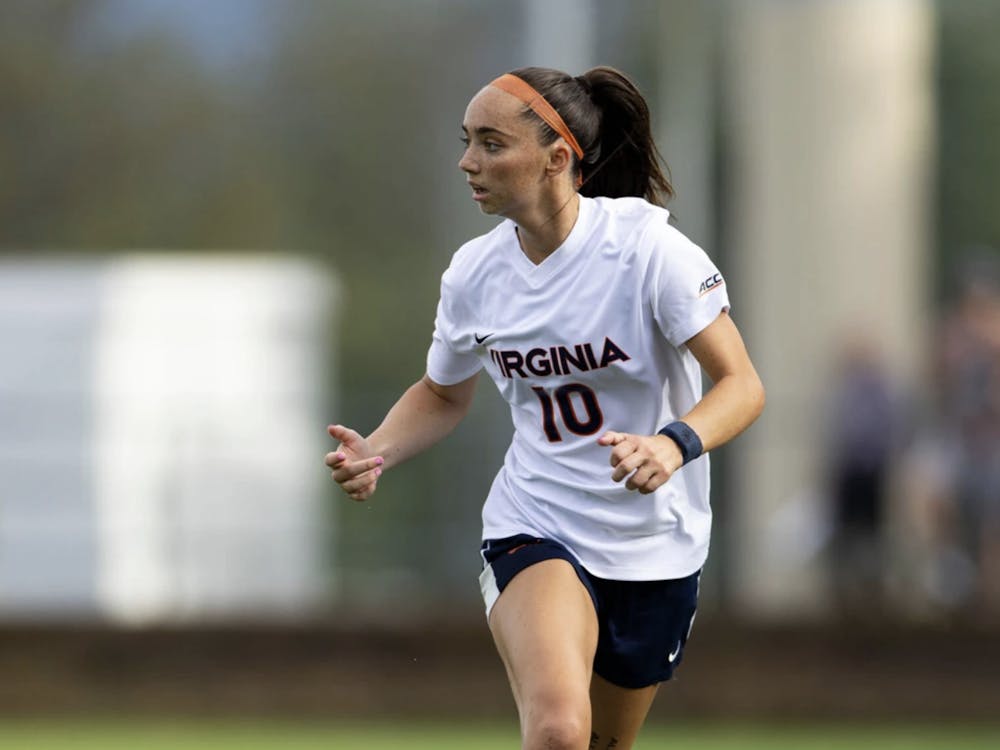On the training field, obliging the media on the eve of his 30th season, Coach George Gelnovatch elaborated on a comparison.
“Just this convergence of these things,” Gelnovatch said. “Transfer prospects, young talent and experienced players returning. So hard to try to do, to get all three of those things.”
Gelnovatch had, six weeks earlier, compared this year’s team to its predecessor from 2019. Not since that team had another rested at the confluence of those three rivers — transfers, youth, experience — and rarely had the rivers rushed so powerfully.
A 2019 comparison makes a significant statement. That team won a conference tournament title and finished second in the nation. That team kept clean sheets in its first two matches.
So did this one.
Virginia had failed, for five straight seasons, to escape its first two games without conceding a goal. But this year it steered through its first two matches unblemished, winning by 2-0 and 1-0.
Six seniors or graduate students started the season-opener. Two freshmen did, too. The experience and young talent went on display immediately. Betraying that promise, though, Virginia stumbled last week in a 4-1 away loss to George Mason.
“A lot of these early games are still trying to figure yourself out a little bit,” Gelnovatch said Monday. “What formation. What works, what doesn’t work, and moving players around, trying different players in different things.”
Virginia’s biggest challenge thus far, after moving to 2-2-0 by beating American, comes Friday at Virginia Tech. The Hokies have blistered out of the gates to start the season, beginning with an upset of then-No. 3 Ohio State, cruising past Canisuis, then fighting to an away draw at No. 2 Marshall. A result will require that talented roster, still laying somewhat dormant, to emerge.
The roster picture shifted all spring like beach sand. But Virginia knew, because of a summer injury to senior defender Nick Dang, it needed a center back. It knew, because of senior defender Reese Miller’s knee injury timeline, the team needed a “left-sided attacking dynamic assist guy.”
“The other thing I knew I wanted, regardless of anything else that was going around,” Gelnovatch said, “was an attacking, dribbling, tricky, pacey attacking player, attacking midfielder, second forward type of guy.”
He got that player in junior Marcos Dos Santos from Boston College. He got the dynamic assist guy in grad student Jesus de Vicente from UIC. He got the center back in graduate student Sebastian Pop, teleported from Norway’s third tier.
The young talent also came in abundance. Forward Nick Simmonds, a hulking 6-foot-4, has started all four games and has already bagged a goal and an assist. Midfielder Sami Oulouheu has also started all four games, and then there is freshman defender Zachary Ehrenpreis, who started every game until the one-game red card suspension sidelined him Monday.
“You have some young, hungry players that are good in affecting the team,” Gelnovatch said. “You have some transfer players also affecting the team.”
They combined, those transfers and returners, for the No. 6 recruiting class in the country. That went with a rock solid core of returners, starting with the captains, senior midfielders Umberto Pelá and Albin Gashi. Then Dang and junior forward AJ Smith, returning after getting drafted to the MLS.
“We have really good depth this year,” Gashi said after the season-opener against San Diego State. “So if people are getting subbed out, subbed in, the quality doesn’t decrease. It’s fresh legs with the same quality.”
Virginia struggled at first to use that depth. But the blowout loss against George Mason — a stumble, then a trip, then a faceplant — at least allowed for some squad rotation, with 22 players featuring in that game. Seventeen players have now played 45 minutes or more.
That is even without Dang and Miller, both waiting to return from injury — soon, Gelnovatch said Monday. Junior midfielder Brendan Lambe, according to the coach, is three or four weeks from returning after going down against George Mason.
That loss followed a familiar pattern. Virginia’s regular season, in its infancy, has gone similarly to its preseason. A thumping of VMI proved to be a mirage before a tougher game against Georgetown.
“We could kind of do what we wanted [against VMI],” Gelnovatch said. “And it became a little bit false in that when we got to the first half of the Georgetown game, that model didn’t work.”
That is the same contrast between the season-opening wins against San Diego State and Stetson and the ensuing crash against George Mason. Midfielders could roam wherever, free from discipline, and everything stayed essentially in front — and then suddenly, faced with an uncowed team projected at the top of a strong A10, things crumbled.
The early-season loss has become a common barb for the program. Last year it was Colgate. Two years ago it was Loyola Marymount. Three years ago it was Xavier. All three seasons went on to find success, after it all. Maybe the loss is an indicator of something good.
Virginia is the only program to have been a top-eight seed two of the past three years, and only one of five to have been a top 16 seed three years running.
Except each of those seasons ended effectively the same way — that high seed, then a first round bye, then a second or third-round loss. Gelnovatch talked last year about getting over the hump, and this year it’s the same hump.
It has not budged — the dune has not shifted with the winds of a couple seasons. There is no way to push it aside except by erosion.
“To get to a College Cup, you’ve got to be knocking on the door,” Gelnovatch said. “It doesn’t just appear. You’ve got to be knocking on the door. And we’ve been doing that for, actually not one year, not two, but actually three years.”







